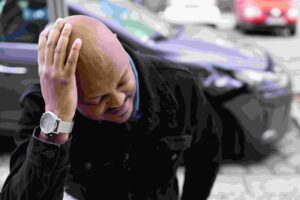
Four-way stop accidents are unfortunate on our roads, leading to property damage, injuries, and sometimes even fatalities. These accidents often leave drivers and victims puzzled as they determine who is at fault. Understanding fault in four-way stop accidents is crucial for assigning responsibility and navigating the legal proceedings that follow.
In Daytona Beach and surrounding areas, car accident lawyers are well-versed in handling such cases and guiding individuals through the complex process. These skilled attorneys specialize in personal injury cases and can assist in establishing fault, ensuring that victims receive the compensation they deserve.
Determining fault in a four-way stop accident involves considering various factors, such as witness testimonies, police reports, traffic laws, and driver behavior. The confusion surrounding fault arises from the shared responsibility at these intersections, where multiple vehicles must yield to one another. It is important to understand these key factors to assess liability accurately.
Here, you can learn more about four-way stop accidents and explore the factors contributing to determining fault. By shedding light on this topic, we aim to provide insight and guidance for those involved in such accidents, helping them make informed decisions and seek justice in the aftermath.
If you are the victim of a four-way stop accident, seeking legal representation is recommended. At Joe Horrox Law, we can help you get the compensation you deserve after an accident.
Understanding Four-Way Stop Intersections
Introduction to Four-Way Stop Intersections At a four-way stop intersection, multiple roads converge, requiring drivers to yield the right-of-way to each other. Understanding how these intersections function is crucial for promoting traffic safety and preventing accidents.
Purpose of Four-Way Stops
The primary purpose of four-way stop intersections is to regulate traffic flow and ensure a fair and orderly progression of vehicles. By assigning right-of-way to each vehicle, these stops help reduce the risk of collisions and create a sense of predictability on the road.
Rules and Responsibilities for Drivers
Drivers must adhere to specific rules and responsibilities when approaching a four-way stop intersection. First, they must come to a complete stop and yield the right-of-way to any vehicles that arrive at the intersection before them. If two or more vehicles arrive simultaneously, the vehicle on the right typically has the right-of-way. Drivers must also proceed clockwise, allowing each vehicle its turn to proceed safely.
Challenges and Confusion
Despite the clear rules, challenges and confusion can arise at four-way stop intersections. Ambiguous or inconsistent driver behavior can lead to hesitation and uncertainty, causing potential vehicle conflicts. Distracted driving, impatience, or a lack of awareness can exacerbate these challenges and increase the likelihood of accidents.
Navigating Four-Way Stop Intersections Safely
To navigate four-way stop intersections safely, drivers should exercise caution and adhere to the established rules. Paying attention to traffic signals, using turn signals to indicate intentions, and being patient can help prevent accidents. Additionally, awareness of other vehicles, pedestrians, and cyclists is essential for ensuring everyone’s safety at these intersections.
Factors Influencing Fault in Four-Way Stop Accidents
The Key to Determining Fault In determining fault in a four-way stop accident, establishing negligence is paramount. Negligence refers to the failure to exercise reasonable care, harming others. Proving negligence involves demonstrating that a driver breached their duty of care, directly causing the accident and resulting in damages.
Witness Testimony and Police Reports
Crucial Pieces of Evidence Witness testimony and police reports play significant roles in determining fault. Eyewitnesses can provide valuable accounts of the accident, offering insights into the sequence of events and the drivers’ actions. Police reports, based on their investigation, often contain valuable details, including observations, diagrams, and potential citations issued to drivers involved in the accident.
Role of Traffic Laws and Regulations in Assigning Responsibility
Traffic laws and regulations are crucial for assigning responsibility in four-way stop accidents. These laws outline drivers’ specific rights and responsibilities at intersections, including the requirement to yield the right-of-way to other vehicles as stipulated by traffic control devices or signs. Violating these laws can serve as evidence of negligence, influencing the determination of fault.
Significance of Driver Behavior in Determining Fault
Driver behavior is key in determining fault at a four-way stop intersection. Actions such as speeding, distraction, failure to yield, aggressive driving, or disregarding traffic signals can significantly contribute to an accident. Drivers who fail to exercise reasonable care and violate their duty to drive safely are often held responsible for the resulting damages and injuries.
Role of Vehicle Condition and Maintenance
The condition and maintenance of vehicles involved in four-way stop accidents can also influence the determination of fault. Malfunctioning brakes, defective tires, or other mechanical issues can contribute to the accident. Negligence in properly maintaining a vehicle can contribute to the collision, resulting in shared liability or assigning fault to the vehicle owner or operator.
Multiple factors come into play when determining fault in four-way stop accidents. By carefully analyzing these factors, legal authorities and insurance companies can make informed decisions regarding fault and compensation, ensuring justice for the victims and promoting safer driving practices.
Comparative Fault and Shared Liability
Comparative fault is a legal concept that comes into play when multiple parties share the blame for an accident. It recognizes that more than one party can contribute to the occurrence of an accident or its severity. The comparative fault determines liability by assigning a percentage of fault to each party involved based on their degree of negligence or contribution to the accident.
Shared Blame in Four-Way Stop Accidents
In four-way stop accidents, there are scenarios where multiple parties may share the blame. For example, if two drivers fail to yield the right-of-way simultaneously, both may be considered partially at fault. Similarly, if one driver was speeding while another was distracted, both drivers may be assigned a portion of the fault for the accident.
Comparative Fault Laws and Legal Proceedings
Florida follows a pure comparative fault system when determining liability in personal injury cases, including car accidents. Under this system, each party involved in the accident can be assigned a percentage of fault based on their degree of negligence.
Even if a plaintiff is found to be predominantly at fault, they can still recover damages, although the amount awarded will be reduced in proportion to their assigned percentage of fault. For example, if a plaintiff is found 30% at fault and awarded $100,000 in damages, they would receive $70,000 after the reduction. Florida’s comparative fault laws aim to ensure a fair distribution of responsibility and compensation in accidents.
Impact on Insurance Claims and Compensation
Shared liability in a four-way stop accident can affect insurance claims and compensation. In jurisdictions that follow comparative fault principles, an injured party’s compensation may be reduced based on their assigned percentage of fault. For example, if an injured party is found 30% at fault, their total compensation may be reduced by 30%. Insurance companies will evaluate the degree of fault and adjust the settlement accordingly.
Seeking Legal Assistance After a Four-Way Stop Accident
After being involved in a four-way stop accident, contacting a personal injury lawyer promptly is crucial. These legal professionals specialize in navigating the complexities of personal injury cases and can provide invaluable guidance throughout the process. By seeking their expertise, individuals can ensure that their rights are protected and they have the best chance of obtaining fair compensation for their injuries and damages.
Navigating the Complexities of Determining Fault
Determining fault in a four-way stop accident can be intricate and challenging. A personal injury lawyer can help individuals understand the legal nuances involved, including the evaluation of evidence and applicable laws. They possess the knowledge and experience to assess the circumstances, identify key factors, and build a strong case to establish liability.
Gathering Evidence, Interviewing Witnesses, and Negotiating with Insurance Companies
One of the primary roles of a personal injury lawyer is to gather crucial evidence supporting the victim’s case. They have the resources and expertise to investigate the accident thoroughly, gather accident reports, collect witness statements, and consult with experts if needed. Additionally, lawyers can negotiate with insurance companies on behalf of the victim, ensuring fair and just compensation is sought for medical expenses, property damage, lost wages, and pain and suffering.
Consulting with a Trusted Attorney for Rights and Fair Compensation
Individuals involved in four-way stop accidents are encouraged to consult a trusted personal injury attorney to protect their rights and seek fair compensation. These professionals can provide personalized legal advice, guide individuals through the legal process, and represent their best interests. By enlisting the services of a knowledgeable lawyer, victims can navigate the complexities of the legal system with confidence, increasing their chances of achieving a favorable outcome.
Determining Fault in a Four-Way Accident
Understanding fault in four-way stop accidents is crucial for legal proceedings and seeking fair compensation. Judging liability can be more accurate by considering negligence, witness testimony, traffic laws, driver behavior, and vehicle condition.
Additionally, comparative fault and shared liability highlight the importance of assessing multiple parties’ contributions to the accident. Seeking the assistance of a personal injury lawyer is highly recommended after a four-way stop accident, as they can navigate the complexities, gather evidence, and negotiate with insurance companies to protect their rights and pursue fair compensation.
Remember, consulting with a trusted attorney is key to ensuring justice and maximizing the chances of a favorable outcome. Contact us at (386) 202-9198 for any questions.
